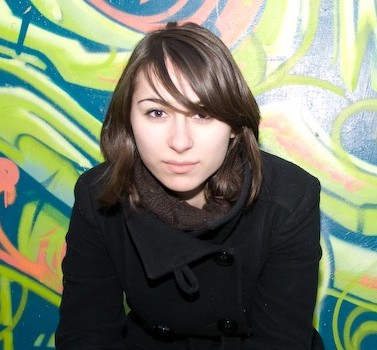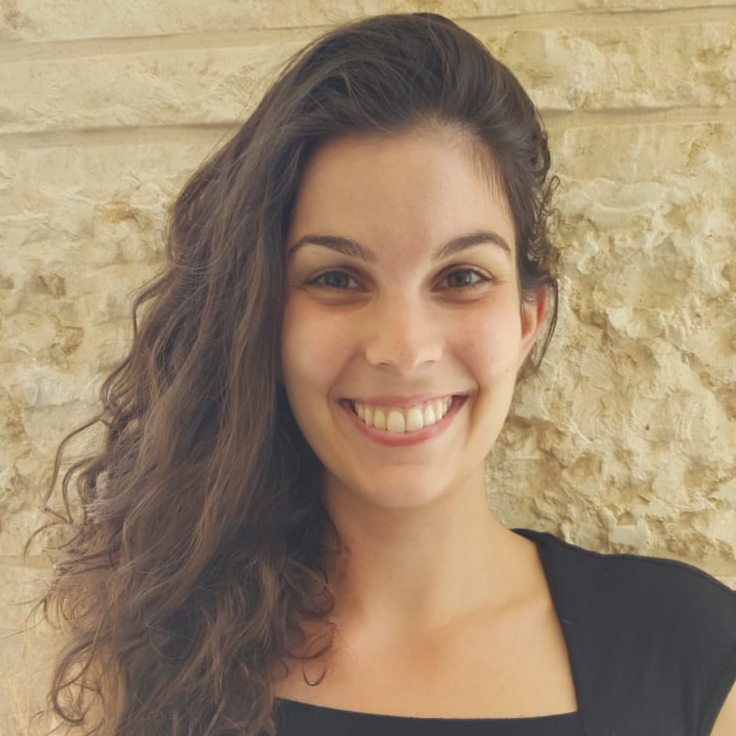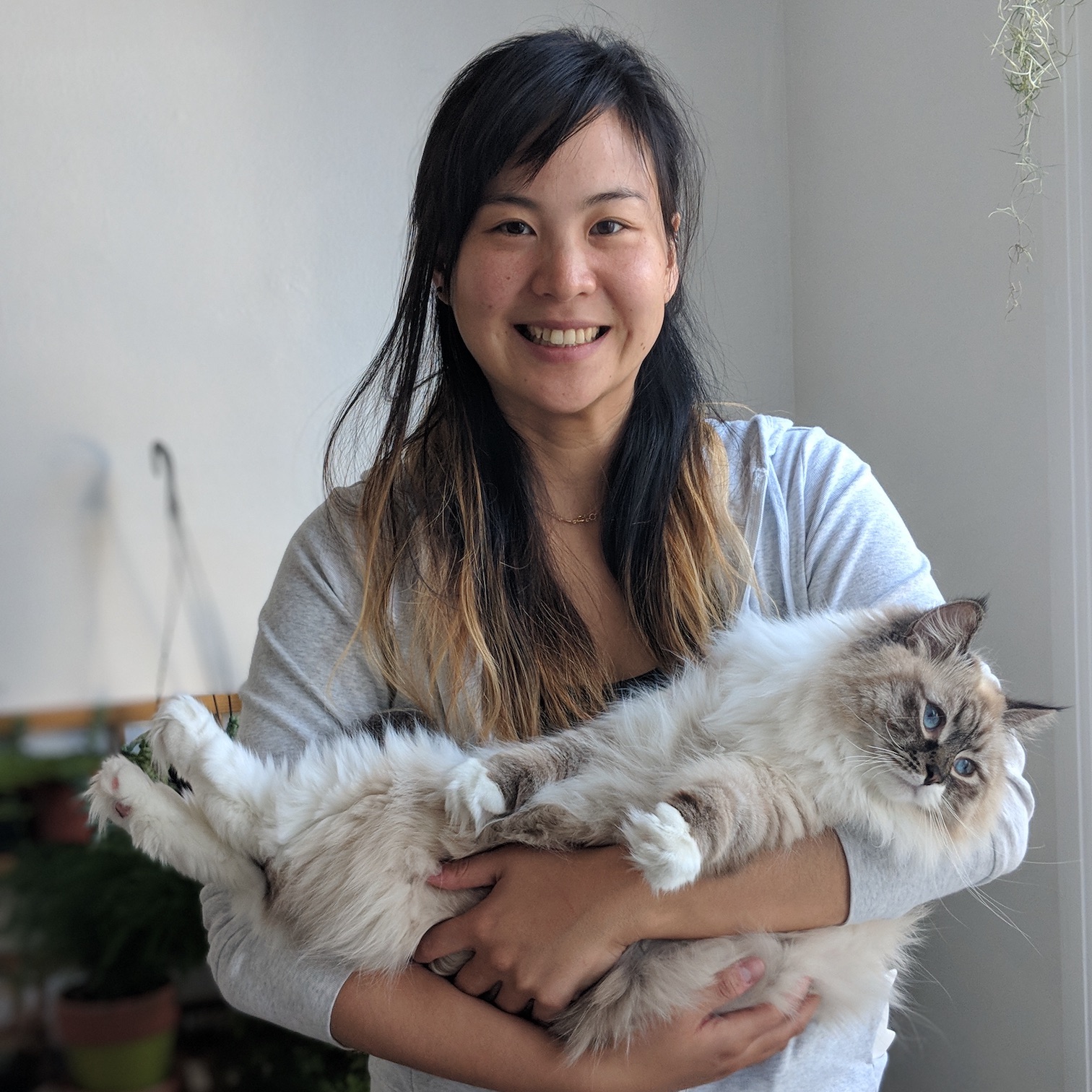Most researchers eventually face a decision about whether they wish to pursue a faculty role or a role in another sector, such as industry, entrepreneurship, or policy. Since many researchers facing this decision have been immersed in academia for most of their lives, a faculty position may feel like the most familiar step. However, this requires a considerable transition from student to teacher, mentor, manager, colleague, and more. To find out more about this transition to professorship and the thought processes that guided their decision, we sat down with three recently-minted faculty members: Angjoo Kanazawa (UC Berkeley), Alexandra Ion (CMU), and Rana Hanocka (University of Chicago). We thank them for sharing their thoughts, and invite you to explore their three unique perspectives!
Meet Alexandra

I am an Assistant Professor at the Human-Computer Interaction Institute at Carnegie Mellon University's School of Computer Science. I lead the Interactive Structures Lab, where we investigate and develop interactive design tools that enable digital fabrication of complex structures for novice users.
Meet Rana

I am an Assistant Professor of Computer Science at the University of Chicago. I founded and direct 3DL (threedle!), a group of enthusiastic researchers passionate about 3D, machine learning, and visual computing. I obtained my PhD in 2021 from Tel Aviv University under the supervision of Daniel Cohen-Or and Raja Giryes.
My research is focused on building artificial intelligence for 3D data, spanning the fields of computer graphics, machine learning, and computer vision. Deep learning, the most popular form of artificial intelligence, has unlocked remarkable success on structured data (such as text, images, and video), and I am interested in harnessing the potential of these techniques to enable effective operation on unstructured 3D geometric data.
Meet Angjoo

I am an Assistant Professor in the Department of Electrical Engineering and Computer Sciences at the University of California, Berkeley. I lead the Kanazawa AI Research (KAIR) lab under BAIR. I serve on the advisory board of Wonder Dynamics. Previously, I was a Research Scientist at Google Research, and BAIR postdoc at UC Berkeley advised by Jitendra Malik, Alexei A. Efros and Trevor Darrell. I completed my PhD in Computer Science at the University of Maryland, College Park with my advisor David Jacobs. During my PhD, I had the pleasure to visit the Max Planck Institute in Tübingen, Germany under the guidance of Michael Black. Prior to that, I spent four years at NYU where I worked with Rob Fergus and completed my BA in Mathematics and Computer Science.
Q & A with WiGRAPH
What is your current area of research?
Rana: My area of research is geometry processing, and I am broadly interested in advancing our ability to analyze, process, edit, manipulate, and generate 3D objects. I have focused on developing deep learning tools, frameworks, and applications which can be used on unstructured 3D data. I have been drawn to explore techniques that allow us to learn with less 3D supervision, which I have applied to the tasks of point cloud consolidation, surface reconstruction, geometric texture synthesis, and (most recently) mesh stylization.
Alexandra: This is good timing because I just gave an opener for a computational fabrication seminar where I discussed the area that I’m passionate about! I am fascinated by metamaterials, which is the design of the microstructure or architecture of materials in order to implement physical properties. These material properties are essentially governed by their geometry. With current 3d printing capabilities, we can create complex geometries and realize physical prototypes of our designs. Extrapolating a little bit, I want to look beyond material properties and investigate what else we can integrate into this geometry. For example, what type of machine-like behaviors can we integrate into passive structures, like mechanical or robotic or even decision-making functions? Can we embed a complex function into the material geometry that can be triggered by a simple actuator from the outside? The user could trigger the material by pushing a door handle, inputting a simple code, or interacting with it in a VR experience. In general, designing systems that can transform simple inputs into complex outputs is what I find fascinating.
Angjoo: My research lies at the intersection of computer vision, graphics, and machine learning. It is about perceiving the dynamic, 3D world from images – I want to look at an image and understand the underlying 3D world behind it, to recover its structures and materials. This is called inverse graphics since it is inverting the forward process of rendering an image in computer graphics. This problem typically requires machine learning to solve because there is not enough data in a single image or video to recover all that information; machine learning allows us to incorporate prior information from other sources to enhance our interpretation of a single image or video. My current interest is the idea of “capturing reality,” whether from photographs or paintings or film – these devices capture reality in 2D, but from them we can reconstruct the dynamic, 3D world.
Why did you decide to become a professor? Now that you are one, are there any aspects of your work life that have surprised you?
Rana:
I have always been passionate about research, but I did not plan for or anticipate a career in academia. During my PhD, however, I gradually came to appreciate the benefits afforded by the pursuit of unconstrained research, and the joys of mentoring and collaborating with bright and motivated students. Now that I am a professor, responsible for executing a long-term research vision for my lab and cultivating opportunities for each of my students, I am even more excited by the promise of this trajectory.
I am surprised at times by how demanding the job can be, especially as a new faculty member balancing between reading and writing papers, applying for grants, performing academic service, teaching, giving external talks, and spending time with my students. Yet, I couldn’t be more excited to learn and grow in this role.
Alexandra:
I originally didn’t want to become a professor when I started my PhD. I knew I wanted to stay in research, but I eventually decided not to go into industry because while top tech companies attract a pool of great summer interns every year, you only get them for a short amount of time. The main reason I gravitated toward academia is getting to work with students that quickly become experts in their area and are able to think about that topic deeply for years. You can only build that type of relationship in an academic environment.
One thing that surprised me was that there are some calls for funding that pop up for interdisciplinary research with very tight deadlines (like two weeks), where you need to find collaborators and come up with something that only your team can do. There are many funding opportunities that occur regularly every year, but some are so quick and challenging to pull together in time, especially when you need to find a team across disciplines. But it is also a great opportunity to meet people in other disciplines.
Angjoo:
I didn’t always think I would become a professor – I haven’t wanted to be a professor since I was little, and even when I was an undergrad, I didn’t really understand what research was. During my PhD, I struggled in the beginning to find a research topic, but in the end, I appreciated that my advisor had a more hands-off style and gave me space to think about what I wanted to work on. I was inspired by cats and how deformable they are, then began to think about how to represent those 3D deformations, and eventually that idea became a research paper. Later, during my postdoc at Berkeley, colleagues encouraged me to consider becoming a professor, and I realized that I had more freedom in doing research I wanted to pursue. Writing a guiding research statement for myself made me very excited to start on this path.
The most surprising aspect so far is how many different jobs this job entails. It involves research, teaching, fundraising, managing a team, service to the community, and internal department service. Being a member of the faculty is like being in a small congress: you become involved in decision-making processes like developing new curricula. This job keeps you on your toes and requires continual learning of new things, as well as reviewing the fundamentals through teaching. That has been pleasantly surprising.
What is your teaching philosophy? How do you try to engage and connect with your students?
Rana: I believe that teaching and research are mutually reinforcing: teachers disseminate information and empower students with knowledge, and students’ inquisitiveness and fresh insights can motivate teachers to revisit their understanding of fundamental concepts, thereby leading to more robust and higher‐quality research. I also believe in making an effort to connect course topics to current research whenever possible, and I find that sharing my excitement and passion for research with students often leads to them expressing interest in joining such research. Of course, effective teaching is key to the success of this model, thus professors should strive to make course content accessible and relevant to students.
Alexandra: I try to engage students to be interactive during lectures. Recently, I have been using a technique of 30-second brainstorming, where I ask a question and ask the students to talk to their neighbor for 30 seconds, then ask them to share. Typically that works really well, but towards the end of the semester it does get harder to get students to be interactive. I just taught two different classes in the past two semesters, and I tried to be observant of what students need.
Angjoo: When I was a student, I asked a lot of questions because I figured that if I didn’t understand something, other people probably didn’t either. In my classes, I encourage my students to ask questions; even if they seem naïve, they can turn out to be surprisingly deep. I try to explain things in an intuitive way and to assign fun, cool projects. Thankfully, computer graphics and vision are intrinsically exciting topics and it has been easy to motivate people.
A key aspect of this transition is managing a lab full of people for the first time. How do you approach building a cohesive lab of PhD students to carry out your research plan?
Rana: I seek to recruit students with open and collaborative personalities. It is critical that students feel comfortable freely talking to each other and me about research, so I try to be as approachable as possible and encourage students to form strong bonds with each other. Everyone in my lab is doing research related in some capacity to 3D, which is conducive to there being a lot of active knowledge sharing. I schedule weekly group meetings during which everyone discusses their projects, which helps us zoom out and get a sense for what people are working on, and triggers opportunities for cross-collaboration and helping each other tackle technical challenges. Organizing group lunches, dinners, and other social events also helps create synergy in the lab.
Alexandra: I’m still in the process of building a strategy. I have several interdisciplinary students from HCI and civil engineering working on projects related to metamaterials. I try to give my students a lot of agency in what they want to work on, but it needs to be something that I can provide help with given my expertise. I’m starting to ask my PhD students whether they need more support or want more responsibility. I’m starting to do lab meetings where my students come together as a group to exchange experiences and help each other out; each student has a unique skillset which might allow them to help on another’s project. I would love to do an “origin stories” gathering, sort of like an open mic night, but each person would talk about the story behind a success in research: what the struggles were behind the scenes and how they overcame them.
Angjoo: The most important strategy for me is clear communication and building trustful relationships with my colleagues and students. In the beginning of the year, I go over my expectations with the entire lab so that they are clear and transparent. I also try to converse with my students outside of project meetings about life and how happy they are. It's nice when the people in your lab are people you enjoy hanging out with outside of work; I’ve been lucky in that regard so far. I value work-life balance and encourage my team to take vacations and develop hobbies and interests outside of work. Over time, the lab takes on the PI’s personality in an interesting way and it morphs into a unique team.
When you were conducting your job search in academia, what factors led you to choose your institution?
Rana: I was drawn to the University of Chicago for many reasons. First, the Department of Computer Science has experienced tremendous growth, doubling in size with 28 faculty members added in the last five years. The vibrant energy of so many ambitious new professors fresh out of their PhDs appealed greatly to me. Since I’ve joined, my colleagues have simply been amazing, with everyone extremely supportive and genuinely interested in helping one another. Second, I considered how I could contribute to the department. Given that there were no faculty members in Computer Graphics, I was intrigued by the possibility of stepping in to help grow this area and complement the department’s existing strengths such as in HCI, Systems, and Machine Learning (including with our close ties at the local TTIC). Third, the students at UChicago are phenomenal – creative, intellectually curious, and capable of performing high-impact research. Lastly, Chicago is a great metropolitan city to live in, with seemingly endless dining, entertainment, and shopping options.
Alexandra:
In my case, it was a two-body problem since my partner is in HCI and we were both looking for faculty positions (if anyone is in that situation, feel free to reach out to me because it can be somewhat tricky to navigate). European universities tend to have less flexibility in the number of positions they offer; we found that American universities were more flexible and the process was simpler. We didn’t really put constraints on location since that would already overconstrain the problem. I also applied to mechanical engineering departments in addition to computer science since my work could be located in either.
Collaboration was the reason why I decided to come to CMU – everyone will tell you that there is collaboration, but at CMU there was real, lived evidence in that there were so many publications across departments and schools. That was attractive because my work is so interdisciplinary.
I also cared about whether the school seemed supportive of junior faculty, which is a little harder to assess but I at least would have a gut feeling. I also appreciated when potential colleagues were open to talking about an area of expertise that was not their own, and whether they were excited to brainstorm ideas for possible collaborative projects.
Angjoo: When you go on the job market, you are nervous because you don’t feel super secure about your position. In potential colleagues, I found it important to be able to have good conversations about research, even if we didn’t necessarily agree, as well as good conversations about other aspects of their lives. Even if those colleagues were not in my exact research area, they could share a lot at the abstract level since we would have so many other jobs in common. I considered how welcoming the department was and whether there was collaboration and social life within the faculty, especially the junior faculty.
What activities or discoveries outside of work have brought you joy during the past year?
Rana: I regularly practice Muay Thai (Thai Boxing) and Boxing, and I enjoy sparring with other fighters. The surprisingly large number of parallels between martial arts and research – learning to develop mental toughness, deal with failure, and push for success even when all seems difficult – has been particularly instructive and meaningful to me.
Alexandra: We’re building a cabin! I like the handiwork and getting outside and being in the fresh air.
Angjoo: I have a lot of hobbies – recently, I have gotten into board sports like Onewheel (an electric skateboard) and electric unicycle, which are very interesting from a control perspective. Then I went back to analog and got into skateboarding. I also surf a little bit.



